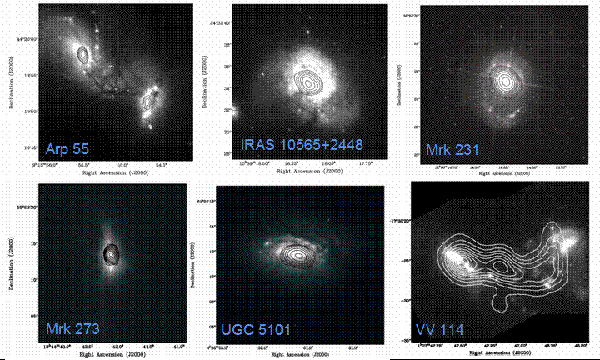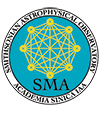|
The SMA Ultraluminous/Luminous Infrared Galaxy (U/LIRG) Survey
The increased popularity in sub-mm galaxies (SMGs; generated for the most part by the SMA's unique ability to locate these galaxies with very high angular precision) resulted in a strong need to understand local U/LIRGs in a more systematic fashion. To fill this need, the SMA undertook a survey of 14 "nearby" U/LIRGs, which are thought to be the local analogues of the high redshift sub-mm galaxies. The wide bandwidth of the SMA allowed for multiple molecular lines to be targeted simultaneously at unprecedented angular resolution. The results of this study were somewhat surprising: despite the high star formation rates and accretion activity in the nuclei of these galaxies, the gas-to-dust ratio is remarkably similar to our own Milky Way. The survey data also reveal that there is a correlation between total molecular hydrogen mass and far infrared luminosity, suggesting that the elevated star formation rates in these LIRGs is simply due to the large amount of "fuel" available (Wilson et al. 2008).
 |
Figure 1: CO J=3-2 contours overlaid on Hubble Space Telescope images for a sample of galaxies in the U/LIRG Survey. The full sample contains 14 galaxies within 200 Mpc and FIR luminosities > 1011. (Wilson et al. 2008). |
The similarity between ULIRGs and normal galaxies led to a follow-up study that directly compared the properties of sub-mm galaxies to the local LIRG analogues. Using the SMA U/LIRG survey data, Iono et al. (2009) found that the SMGs are predominantly intermediate-stage mergers, and that the wider line widths arise from the violent merger of two massive gas-rich galaxies taking place deep in a massive halo potential.
» Next Page: The Ultraluminous Infrared Galaxy Arp 220 (a case study):
« Previous Page
SMA Research
| 

